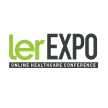Clearing the path: Lasers for fungus in New York
laser treatment

Introduction
Fungal infections affecting trees have become a significant concern in urban areas, particularly Lasers for Fungus in New York. These infections not only pose a threat to the health of the trees but also impact the aesthetic appeal and ecological balance of the city. Traditional methods of combating tree fungus often involve the use of chemical treatments, which may have adverse effects on the environment and other living organisms. As a result, there is an increasing interest in exploring alternative and sustainable solutions. One promising technology that has emerged in recent years is the use of lasers for fungus control.
The Problem of Fungal Infections in New York
New York's urban environment provides the ideal conditions for various fungal infections to thrive. Factors such as high humidity, crowded living spaces for trees, and environmental pollution contribute to the growth and spread of tree fungal diseases. The most common tree fungal infections in the city include anthracnose, oak wilt, and Dutch elm disease, all of which can lead to severe damage and mortality among affected trees.
Challenges of Traditional Fungus Control Methods
Conventional methods of controlling tree fungus, such as chemical sprays and injections, have been widely used for decades. While these methods can be effective to some extent, they come with several drawbacks. First, the use of chemical treatments can have adverse effects on the environment, including soil and water contamination, and may negatively impact other beneficial organisms. Second, the effectiveness of these treatments may decline over time due to the development of resistant fungal strains. Lastly, applying chemical treatments to large numbers of trees in an urban setting can be labor-intensive and expensive.
The Emergence of Laser Technology for Fungus Control
In recent years, researchers and arborists have turned their attention to laser technology as a potential solution to combat fungal infections in trees. The idea behind using lasers lies in their ability to deliver targeted and controlled energy to the infected areas without causing harm to the surrounding healthy tissues. Laser treatments are non-invasive, reduce the risk of chemical pollution, and have the potential to offer long-lasting effects.
How Lasers Combat Tree Fungus
Laser treatments for tree fungus are based on a technique called photodynamic therapy (PDT). In this process, a photosensitizing compound is applied to the infected area, which is then activated by a laser of specific wavelengths. The activated compound generates reactive oxygen species (ROS), which are highly reactive molecules that can damage fungal cells at the cellular level. The targeted delivery of laser energy ensures that only the infected tissues are affected, leaving the healthy tissues intact.
Advantages of Laser Treatment for Fungus Control
Environmentally Friendly: One of the most significant advantages of laser treatments is their eco-friendliness. Unlike chemical treatments, lasers do not introduce harmful substances into the environment, reducing the risk of soil and water contamination.
Precision Targeting: Laser treatments offer a high level of precision, allowing arborists to target specific areas of infection without affecting healthy tissues. This reduces collateral damage and promotes faster recovery of treated trees.
Reduced Labor and Costs: The non-invasive nature of laser treatments means that extensive protective measures and cleanup are not required. This can result in cost savings and increased efficiency in treating a larger number of infected trees.
Minimal Disruption: Laser treatments can be carried out without disrupting the surrounding environment or public spaces. This is especially advantageous in urban areas where tree health is vital for the well-being of residents and the overall aesthetics of the city.
Long-Lasting Effects: Properly conducted laser treatments can have long-lasting effects on fungal infections, reducing the need for frequent follow-up treatments.
Case Studies and Research Results
Several studies have been conducted to evaluate the effectiveness of laser treatments for fungal infections in trees. One notable case study took place in a heavily wooded area in New York City, where oak wilt had been a persistent problem. Researchers used laser treatments to target infected trees, and after a year of monitoring, it was observed that the treated trees showed a significant decrease in fungal growth compared to the control group.
Conclusion
In conclusion, the emergence of laser technology for fungus control in New York offers a promising alternative to traditional chemical treatments. Laser treatments provide a precise, non-invasive, and environmentally friendly solution to combat tree fungal infections. By targeting the infected areas with controlled energy, lasers can effectively neutralize fungal cells without harming healthy tissues. This approach not only reduces the risk of chemical pollution but also minimizes the disruption caused during the treatment process. As research in this field continues, laser technology may become a key tool in preserving the health and beauty of New York City's urban forest and maintaining a sustainable and thriving ecosystem for future generations.
About the Creator
ler expo
We’d like to introduce you to lerEXPO.com – the first Global Community for Online Education in the lower extremity space. Just like Lower Extremity Review (LERmagazine.com),
visit us - Online Conference Platform New York
Enjoyed the story? Support the Creator.
Subscribe for free to receive all their stories in your feed. You could also pledge your support or give them a one-off tip, letting them know you appreciate their work.






Comments
There are no comments for this story
Be the first to respond and start the conversation.